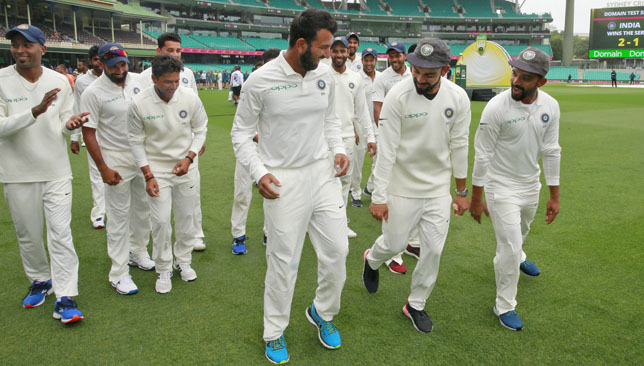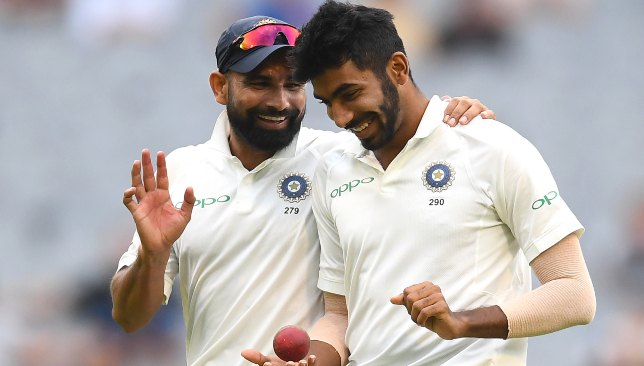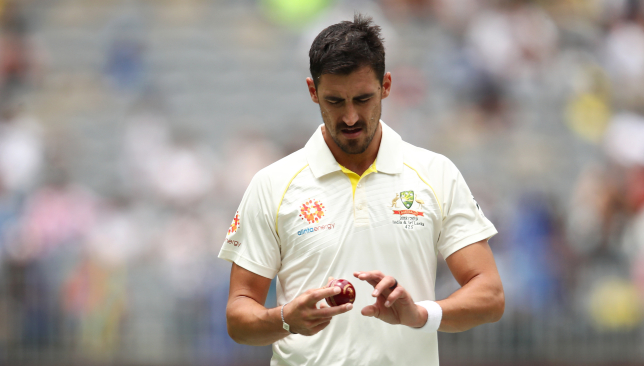
India were denied a shot at victory in the fourth Test in Sydney after rain ruined play on the final two days of the match.
Even so, a 2-1 series triumph is just reward for the No1 Test team in the world after disheartening tours of South Africa and England in 2018 where they let go of winning positions and ended up losing both easily.
Pujara’s batting
The biggest difference between the two teams. Pujara scored three centuries in four Tests. No Australian batsman even reached 80. His centuries in Adelaide, Melbourne and Sydney put India in winning positions and he helped bat Australia out of contention in Melbourne and Sydney.
While he was the only batsman from either team to score more than 400 runs, let alone 500 (521), it was the number of balls that Pujara faced – 1258 – which took the edge out of Australian bowling.
India’s bowling

Bumrah (r) has had a terrific debut year in Test cricket.
As uninspiring as Australia’s batting was without Steve Smith and David Warner, the Aussies were playing at home and did have some experienced batsmen in the form of Usman Khawaja and Shaun Marsh.
But apart from debutant Marcus Harris and lower order bats Pat Cummins and Travis Head, to an extent, Australia couldn’t withstand the pace and accuracy of Jasprit Bumrah, Mohammed Shami and Ishant Sharma. Spinners Ravindra Jadeja and Kuldeep Yadav took over from an injured Ravi Ashwin and made life even tougher for the hosts. Aussie batting looked bad mainly because India’s bowling was exemplary.
Toss
Kohli has not lost any of 21 Tests in which he won the toss. Same for Bardman in 10 Tests. Cowdrey one defeat in 17 Tests, du Plessis one in 14 and Williamson one in 11. #AusvInd
— Mazher Arshad (@MazherArshad) January 3, 2019
Winning the toss in Test cricket has become critical since the start of 2018 with pitches all across the world proving to be challenging, and almost all of them deteriorating rapidly in the second innings. Generally, batting first and watching the opposition crumble under the pressure of a fourth-innings chase has become a recipe for success. In all four Tests in Australia, the team that won the toss batted first and won the match or reached a winning position – as was the case in Sydney.
Aussie batting
The Australian team was unhappy at the nature of wickets offered during the four-Test series. They believe only Perth was conducive to their brand of cricket. However, the fact is it was spinner Nathan Lyon who won them the Perth Test. And if the conditions were too good for batting in the other three Tests, why didn’t a single Australian score a century? Why was their top score only 326?
Australia didn’t have Smith and Warner. But that shouldn’t have stopped others from scoring runs across four Tests at home. Inability to occupy the crease for long periods or score ‘ugly’ runs shows Australia’s batsmen have a lot of work to do in red-ball cricket.
Off-colour Starc and Hazlewood

Australia pacer Mitchell Starc.
India’s quicks outperformed a fully-fit Australian pace trio and that is no mean feat. Bumrah, Shami and Ishant adjusted their lines and length immediately and made Australia’s batsmen sweat it out for every run. Even on the penultimate day of the final Test in Sydney, Bumrah was bowling at nearly 150kph against Australia’s tail-enders.
On the other hand, Mitchell Starc’s radar malfunctioned and even though his pace was up, there was no rhythm or accuracy at all. Even Josh Hazlewood pulled his length back which allowed India to bat freely. Only Cummins troubled India with his accuracy. That only one Indian batsman got out lbw shows the Aussies didn’t target the stumps as much as they should have given the variable bounce on offer at all venues.